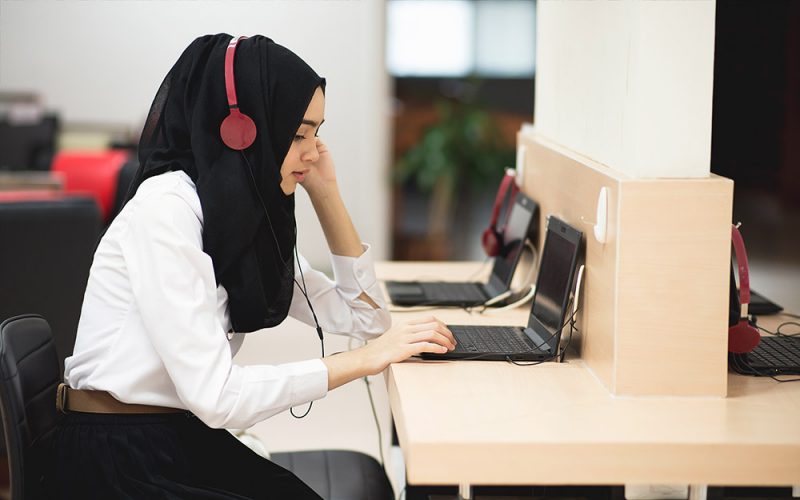MIDA Insights – Services

This site
is mobile
responsive
Malaysia’s higher education system is undergoing a comprehensive transformation and has matured significantly. The curriculum and teaching methods are being revamped with new critical elements such as experiential learning, future-ready curriculum, and lifelong learning mind-set to develop future-ready graduates. Graduates’ skillsets are also further enriched to embrace opportunities within the gig economy.
According to the Ministry of Education (MOE)’s ‘The Way Forward for Private Higher Education Institutions: Education as an Industry (2020-2025)’, as of 30 September 2019, there were a total of 1,325,699 students pursuing their tertiary education in higher education institutions (HEIs) in Malaysia. This consists of 692,355 students (52.3%) in 20 public universities and branch campuses while 633,344 (47.7%) are in over 400 private HEIs (PHEIs). As for international students’ enrollment, over 70 per cent (92,415 students) are in PHEIs, and 30 per cent (39,099 students) are registered in public universities. Malaysia aims to continue positioning itself as an international education hub, targeting 250,000 international students by 2025.
The unprecedented outbreak of the COVID-19 pandemic has contributed to the rise of e-learning. As Professor Dr. Abdul Karim Alias, Director of Centre for Development of Academic Excellence (CDAE) at Universiti Sains Malaysia (USM) emphasised, “Online learning and online education are no longer an option – it’s a must.”
E-learning is a technology trend which provides opportunity for long-life learning and requires digital literacy readiness. The Malaysia Education Blueprint 2015-2025 (Higher Education) highlighted priorities of digital literacy, critical thinking and problem solving as the 21st century learning skills that will help students to thrive in the era of IR4.0. It can be carried out through various platforms such as multimedia mobile devices with added features of Virtual Reality (VR), Augmented Reality (AR), Mixed Reality (MR) and Artificial Intelligence (AI).
In response to the New Normal resulting from the pandemic, Malaysia’s higher learning institutes jump-started their initiatives in adopting e-learning approaches, denoting on Open and Distance Learning (ODL) practices. In general, ODL is the emerging trend to access quality education, lifelong learning opportunities, flexible modes of learning and conducive learning environment for young school leavers, university communities and the working population. Students participate in online lectures, tutorials and self-directed online learning; while online tests and assignments allow students to instantly review the marks and feedback to help them improve in their next sittings.

There are over 10 specific institutions which offer Open and Distance Learning programmes in Malaysia, each significantly contributing towards achieving Malaysia’s goal in human capital development. Open University Malaysia (OUM) is one of the earliest e-learning institutions in the country with operations since 2001. From its first intake of 753 students, OUM has produced over 85,000 graduates. Other ODL institutes include Wawasan Open University (WOU), GlobalNxt University, Asia E-University, SEGi University, Veritas University College, MAHSA University, UNITAR International University, Universiti Tun Abdul Razak (UNIRAZAK), Al-Madinah International University (MEDIU) and Genovasi University College.
Similar to ODL institutes, premier public universities in Malaysia such as Universiti Sains Malaysia (USM), Universiti Utara Malaysia (UUM), Universiti Malaya (UM), Universiti Teknologi Malaysia (UTM) and Universiti Teknologi MARA (UiTM) have also been offering e-learning through Massive Open Online Courses (MOOCs). USM, for example, have been using this teaching module for the past 17 years.
To ensure the effectiveness of e-learning among students and teachers, adequate hardware and high accessibility to the internet throughout the country is required. Additionally, MOE’s online learning readiness survey on March 2020 indicated that access to gadgets at home as one of the main factors to increase digital literacy for students.
To address these challenges, the Malaysian Communications and Multimedia Commission (MCMC) launched the National Fiberisation and Connectivity Plan (NFCP 1) on 19 September 2019. This initiative targets to provide average internet speed of 30Mbps in 98 per cent of populated areas by 2023 as well as have fibre network passes 70 per cent of schools, hospitals, libraries, police stations and post offices by 2022.
The Government will also embark on a 5G network roll out in various states with fibre optics infrastructure development and digital application ecosystem.
This will potentially broaden deployment and greater accessibility of e-learning through connected devices in homes, offices and educational institutions all over Malaysia.
Furthermore, e-learning offers huge business opportunities among technology providers.
Global support by Scribd, Audible Stories, Cambridge University Press and Jstor to offer free services of e-books, textbooks, audiobooks and research journals further complements the global e-learning momentum, especially during these uncertain times.
To effectively harness new learning trends, higher education institutions need to invest in education technology infrastructure and network.
In achieving this, the Malaysian Investment Development Authority (MIDA) encourages local and foreign investors to tap on investment opportunities in this online education sector. MIDA also welcomes more companies to venture in new growth areas of high value-added, knowledge-based technology in creating a conducive and engaging lifelong learning environment in Malaysia.
